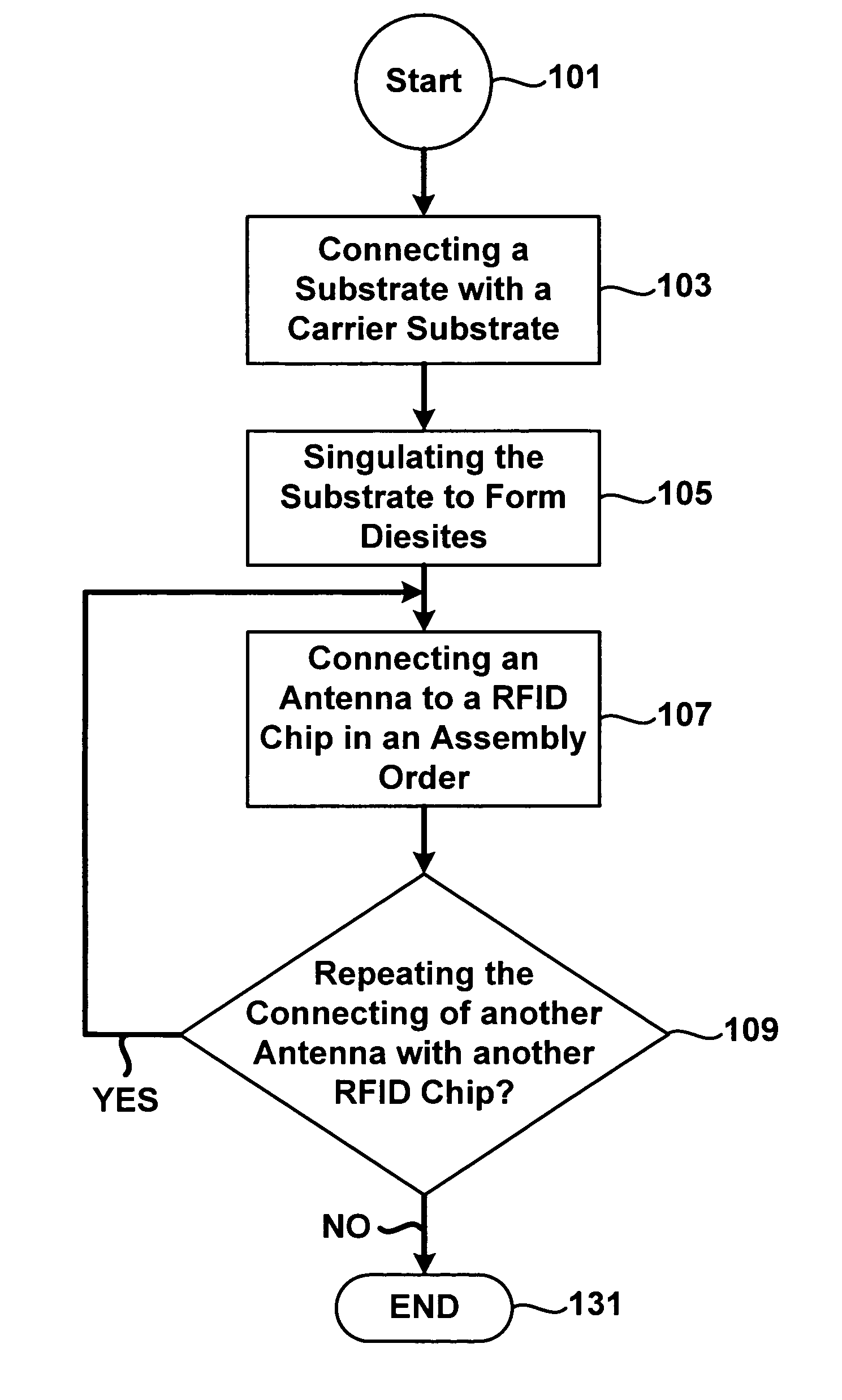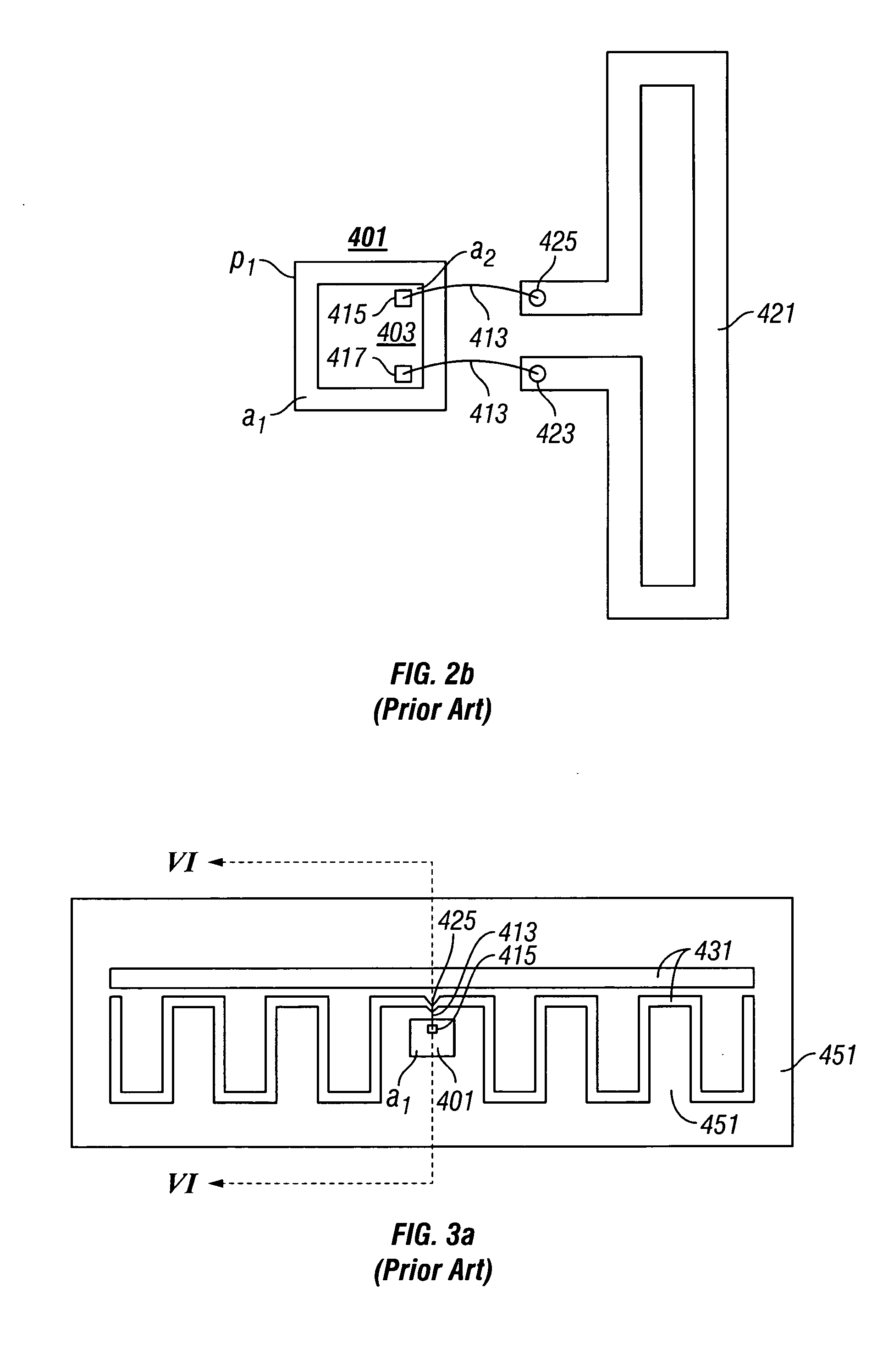Method of fabricating a rat's nest RFID antenna
a radio frequency identification and antenna technology, applied in the field of methods of fabricating rat's nest radio frequency identification (rfid) antennas, can solve the problems of large active rfid tags, more expensive than passive rfid tags, and the rfid chip b> will only offer a very limited range, and achieve the effect of low cost and little to the cos
- Summary
- Abstract
- Description
- Claims
- Application Information
AI Technical Summary
Benefits of technology
Problems solved by technology
Method used
Image
Examples
Embodiment Construction
[0037] In the following detailed description and in the several figures of the drawings, like elements are identified with like reference numerals.
[0038] As shown in the drawings for purpose of illustration, the present invention is embodied in method of fabricating an antenna on a substrate including a plurality of previously fabricated RFID chips.
[0039] In FIGS. 5a and 5b, a substrate 11 includes a plurality of RFID chips 21 that have been previously fabricated on the substrate 11. Accordingly, one of ordinary skill in the art will appreciate that the RFID chips 21 can be fabricated using processes that are well understood in the microelectronics art and that the RFID chips 21 can include RF circuitry, analog circuitry, and digital circuitry. The substrate 11 can be made from a material including but not limited to a semiconductor material, silicon (Si), and a silicon wafer such as the type commonly used in the fabrication of microelectronic devices. The substrate 11 can have a ...
PUM
| Property | Measurement | Unit |
|---|---|---|
| size | aaaaa | aaaaa |
| area A1 | aaaaa | aaaaa |
| area A1 | aaaaa | aaaaa |
Abstract
Description
Claims
Application Information
 Login to View More
Login to View More - R&D
- Intellectual Property
- Life Sciences
- Materials
- Tech Scout
- Unparalleled Data Quality
- Higher Quality Content
- 60% Fewer Hallucinations
Browse by: Latest US Patents, China's latest patents, Technical Efficacy Thesaurus, Application Domain, Technology Topic, Popular Technical Reports.
© 2025 PatSnap. All rights reserved.Legal|Privacy policy|Modern Slavery Act Transparency Statement|Sitemap|About US| Contact US: help@patsnap.com



